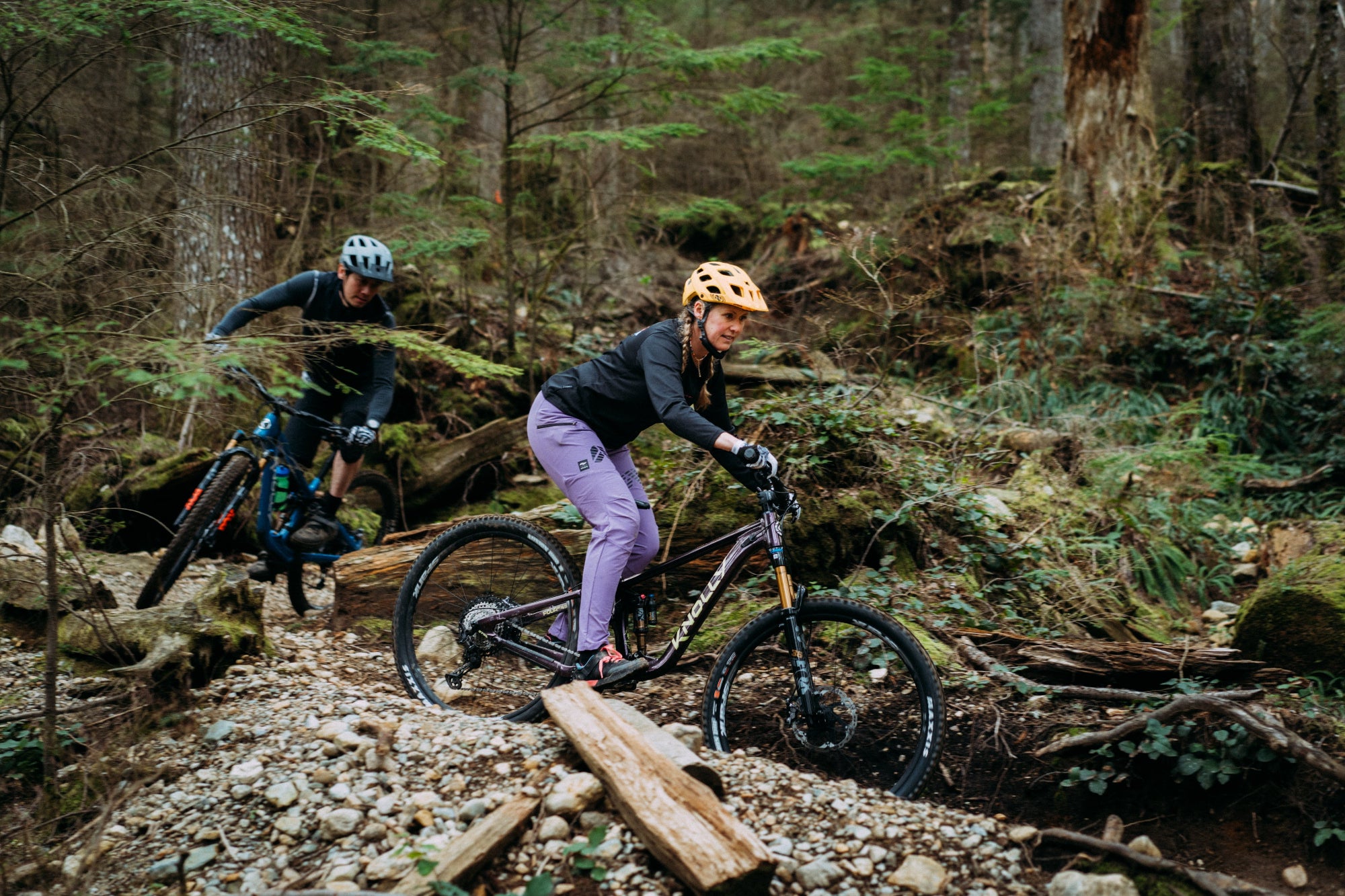Knolly Bikes Fitment and Sizing

With the rollout of our new generation of Knolly frames, there has been a lot of discussion about fitment and sizing. For both new and loyal Knolly riders, we want to share a bit of KNOwledge to help you navigate our geometry charts.
Disclaimer - we have translated Noel Buckley’s original article into Layman’s terms, but for the true bike nerds, we’ll provide the longer format Blog post in the near future.
So, what does ‘Fitment’ actually mean? It’s a combination of (and relationship between) the Effective Top Tube Angle (ETT), Effective Seat Tube Angle (ESTA) and Headtube (HT) location. Those numbers set the Reach and Stack measurements of the bike.
Since 2017, frame design across the industry has evolved into ‘Forward Centric Geometry’. This essentially means longer top tubes, steeper seat tube angles, and shorter stems. A modern mountain bike can have reach numbers 100mm (4”) longer than a decade ago. Apart from a steeper and more efficient climbing position, those two bikes would have the same cockpit fit and feel.
Let’s be honest, is “REACH” the first number you look for in a geometry chart?
It is for most riders, and that number alone can look really overwhelming on modern Enduro bikes. While REACH is an important fitment measurement, there are a combination of measurements that tell the full story:
- Effective Top Tube Length (ETT) - choose frame size based on individual rider size/proportions and stem length.
- Effective Seat Tube Angle (ESTA) - designed for each frame model and size to provide a comfortable and efficient climbing position
- Stack - designed to be optimized for the ideal cockpit height for a wide range of riders.
Enduro bikes have steeper ESTA than Trail bikes. Why? More travel = more sag when climbing. They have more centered geometry for aggressive riding and are optimized for climbing, then descending (think: up, then down).
Trail bikes run a slightly more relaxed geometry. This is to prioritize comfort for both climbing/descending, and for traversing to reduce pressure on hands, wrists and knees (think: up, across, then down).
How does a steeper ESTA (Effective Seat Tube Angle) change the geometry of a bike?
It pushes the front end out, which increases the Reach measurement on Enduro vs. Trail bikes.
Enduro bikes are designed to run shorter stems than Trail bikes. This makes the ETT longer which also increases Reach.
Reach numbers on our Enduro bikes can be 15-20mm longer for a given frame size compared to our Trail bikes.
The Fugitive is designed for stem lengths ~10mm longer than the Chilcotin. This makes the ETT slightly shorter (~10mm), combined with the ~1 degree slacker seat tube angle, resulting in the Reach number being significantly shorter.
How does the combined information on REACH, ESTA, and ETT translate to picking the right size Knolly?
You might be surprised by the Reach numbers on our Enduro bikes, but it shouldn’t make you want to down size. For returning Knolly riders, you should be buying the same frame size as before - unless you were between sizes in our previous models. In Knolly terms, while there is a significant increase in reach, our ETT dimensions have changed only slightly vs. our previous generation bikes.
For new Knolly riders, our sizing guides are quite accurate (assuming you have fairly normal body proportions). You can find sizing charts at the bottom of each frame model page on our website. Sizing labels for modern mountain bikes have become similar to the ones on pants and shoes. Every company’s version of a ‘small, medium, large’ can vary, which is why we have moved towards ‘S1-S5’ labels. Pick your bike based on ETT since it is the measurement that counts most when you are ON the bike (pedalling, climbing, moderate descending).
What if I am between sizes?
There is no simple answer. Our current most common "'tweener" size inquiries are for riders 5'7, 5'11, and 6'3. The choice will come down to personal preference - do you want to be the top or bottom end of a frame size based on your riding style and fit/comfort requirements.
General rules of thumb:
- sizing 'down'
- Pros - quick handling/maneuverability, playful, more aggressive riding position,
- Cons - less high speed stability, may require longer stem, may be less comfortable over longer rides
- sizing 'up'
- Pros - high speed stability, roomier cockpit for less aggressive riding position
- Cons - less maneuverability, may require shorter stem, longer seat tube means less room for dropper post insertion
If you need some guidance, reach out to our team with your height, inseam length, and details about the setup of your current bike.